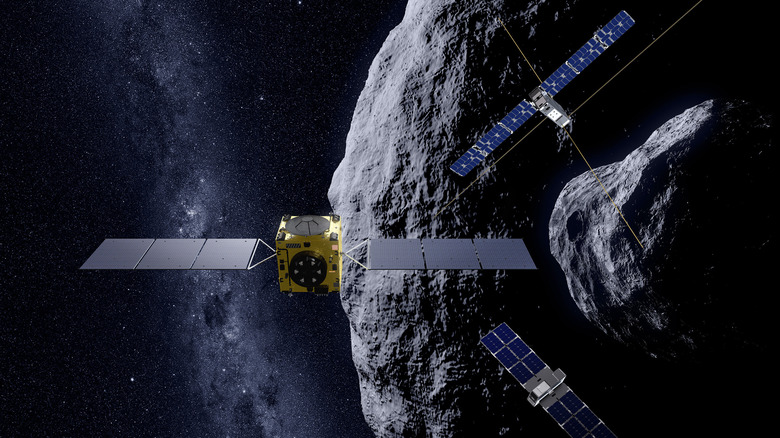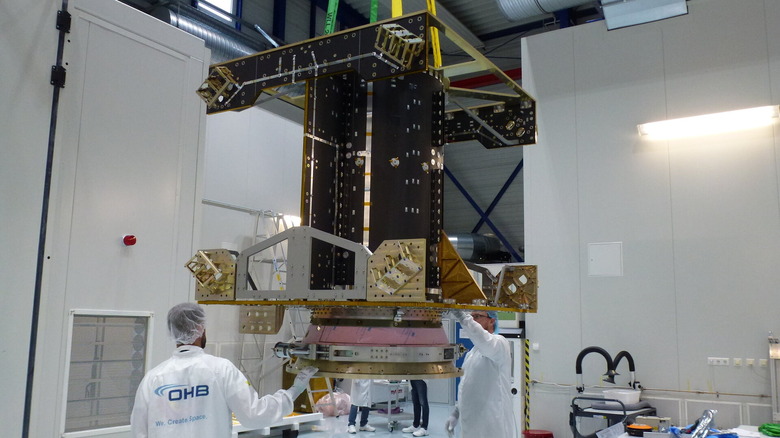How The European Space Agency's Hera Mission Plans To Defend Earth From Asteroids
It's been the plot for plenty of sci-fi movies, but the threat of an asteroid impacting the Earth is a real one. If a big enough asteroid hit the planet it could cause catastrophic damage, so space agencies around the world are working on plans for planetary defense systems that could spring into action if we ever do spot a planet-killing chunk of rock heading our way.
The European Space Agency (ESA) has a mission called Hera, which is set to launch in September 2024 and which will visit asteroid Dimorphos to see just what options we as a species might have open to us if we were faced with an asteroid threat. Hera is part two of NASA's DART mission, which launched in 2021. The idea is that DART, a small spacecraft with an autonomous navigation system, will head to a pair of asteroids called the Didymos binary, which orbits the sun and occasionally comes close to Earth (via NASA) –- though these asteroids aren't in danger of actually impacting us.
In September 2022, DART will then crash into the smaller asteroid of the pair, Dimorphos, at a speed of around 4 miles per second in an attempt to shift its orbit (via ESA). This will show whether such a dramatic action as sending a craft to crash with an asteroid could be effective in knocking it off course if it were heading for Earth. But how will we know if DART was successful? That's where Hera comes in. Hera will head to the same location to see what happened to the asteroid after DART struck it and whether the wacky-sounding plan actually worked to shift the asteroid's orbit.
Preparing Hera for launch
In order to investigate the asteroid, Hera will be outfitted with a propulsion module that includes fuel tanks and thrusters to carry it on its 26-month journey, as well as a core module that will carry the scientific instruments and the spacecraft's computer (via ESA). In June 2022, the propulsion module was shipped out of Germany where it had been built to Rome, Italy, where it will have its fuel tank added.
Hera's mission will not only be a chance to see whether humanity could protect itself from an asteroid impact, but it will also be the first time we have sent a probe to rendezvous with a binary asteroid system, according to the ESA. So the spacecraft will include scientific instruments for investigating the asteroids as well as to see whether the orbit of Dimorphos has shifted.
Hera's instruments include a camera called the Asteroid Framing Camera to snap images of the asteroid, an infrared camera called the Thermal Infra Red Imager, a laser altimeter called the Planetary ALTimeter to measure the distance to the asteroid accurately, and an instrument called Hyperscot for investigating the geology of the asteroid (via Hera Mission). In addition, Hera will also deploy two small satellites called CubeSats, one named Milani for observing the surface of the asteroid and one named Juventas for taking radar sounds of the asteroid (via ESA).

